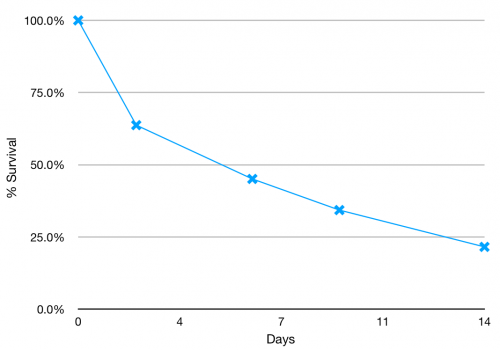One of the benefits of my job is that I get to work with young men and women all day, except when I’m not, when I’m puttering about with spiders (we will pretend committee meetings do not happen). So this morning I had my coffee and then toddled off to the lab to tend to my little friends.
Here’s my breeding colony.
They’re the ones with special privileges. They get the big roomy 5.7L sterilite containers, with one female per cage and connubial visitations. There are also racks in a pair of incubators with about 50 more spiders living in 3cm diameter tubes; they seem content, as long as food keeps getting delivered. So some of the spiders get to live in a suite at the Hilton, others are in the capsule hotel.









